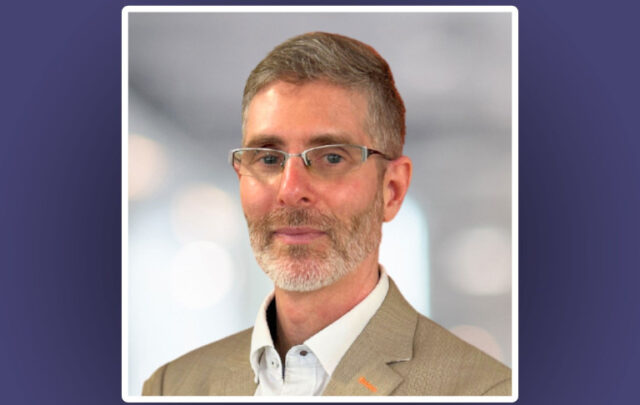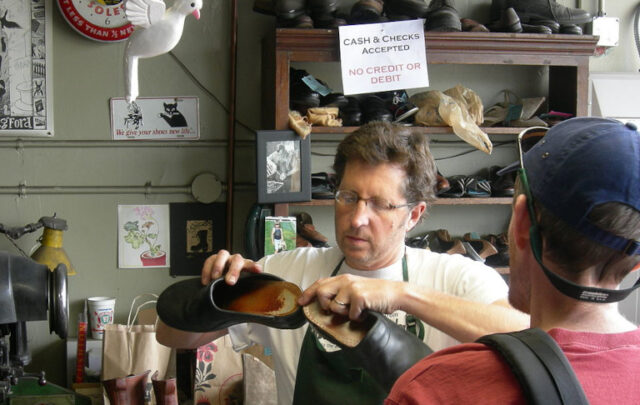One of the paradoxes of industrial civilization is that in most communities we have, simultaneously:
1. many unmet needs: for affordable housing, healthy local food, meaningful livelihoods, real communities, and the need for ‘more time’, and
2. many unused capacities: unused physical spaces (land, buildings, rooms), available labour (especially the retired and the unemployed), savings that earn almost no return, and cars, tools and equipment that sits idle most of the time
Centuries ago, once cities emerged and the gift economy could no longer fill the gap between unmet needs and unused capacities, pre-industrial humans invented something to match the latter to the former. It was called “currency” since it was an enabler of the flow of unused capacities to meet unmet needs. At first, it was used mostly for ceremonial and tribute purposes: dowries, tithes to the church, and ‘symbolic’ gifts, but grew to be a common medium of exchange.
This “currency” worked better than barter systems, since two people could enter into a transaction even if only one had something the other needed; the ‘currency’ could be used by the provider in this transaction to acquire something s/he needed from someone else.
And then something happened to mess it all up. Those who had violently stolen the commons — the property of the people — and proclaimed it their ‘private’ property decided they could profit hugely from also controlling the currency. By preventing the poor and middle classes from issuing their own currency (people had used everything from grain to salt to chits and IOUs), the rich bandits could use the ‘currency of the realm’ to siphon wealth and assets from the poor to them. They did this by usury (the previously forbidden and socially disgraceful process of charging interest for the loan of currency), by charging taxes and rents on ‘their’ land and its bounty, and by extortion for ‘protection’. And so, money — currency issued by a cabal of wealthy politicians and ‘businessmen’ — became “the root of (almost) all evil”.
Like many aspects of complex adaptive systems, the introduction of centralized fiat currencies controlled by moneyed interests quickly became entrenched through a positive feedback loop: As long as everyone needed the new money currency to pay taxes, they had to use it in their own enterprises, in order to have it to pay their thieving landowners and lords. Other, more useful and equitable currencies soon disappeared (or were banned).
Once that had happened, the only time people used community-based currencies of their own design was when (due to impropriety, greed, excessive military or vanity spending by the wealthy, or simple incompetence), the official money currency suddenly lost all its value (what we now call hyperinflation). We simply forgot, most of the time, there was any other type of currency than the national fiat money controlled by the ‘ruling’ class. And we (foolishly and essentially) ascribed a magical quality to it — ‘value’ — a quality that any currency has only by virtue of the collective faith and collective agreement of users.
Today, with the global economy massively overextended and teetering on the edge of collapse, many are starting to look again at community-based currencies, either as a fall-back in case centralized currencies collapse (as people come to realize they are actually worthless), or, as in the case of post-Soviet Russia and today’s Southern European nations, because the official currencies have hyperinflated or disappeared entirely from most people’s pockets.
But it’s a difficult process. People, ironically, have come to believe that a currency must be backed by the banks and governments to have value, and don’t trust any community currency that is not. Many experimental community currencies, to deal with this apprehension, are convertible (by some formal exchange mechanism) into the national fiat currency. But then what happens is that nervous holders quickly convert their community currency back to fiat currency, until there is none of the former left in circulation. A currency is only currency if it circulates — flows — and one that is exchanged or socked away and ceases to flow quickly becomes worthless, since no one wants to be the last to accept it.
A variety of other ways have been used to introduce community currencies. Some are backed by signed promises of individuals, whose trustworthiness is often attested by community co-signers, essentially a form of transferrable IOUs, and are often denominated in hours or minutes of labour to provide some reference point for their value.
Another method, called The Community Way by its inventor, Vancouver Islander and LETS system founder Michael Linton, is created when businesses in a community (like Vancouver) ‘donate’ the community currency into existence, issuing the local currency to non-profits who then sell (exchange) it to citizens in return for fiat currency. The citizens can then use the community currency in the issuing local businesses to acquire local goods and services. It serves the purpose of keeping the flow of economic value within the community, but it is often a challenge convincing local businesses to accept it, and overcoming fears that, without a bank or other wealthy authority standing ready to redeem it for ‘real’ currency, it may suddenly lose its value and leave the holders ‘holding the bag’. So it’s essentially a process of persuading the community to trust each other, which in today’s cynical society can be quite difficult.
And then of course there are pure and modified barter systems, when real goods and services are exchanged for other real goods and services, or alternatively are ‘secured’ by real commodities and valuable objects of one of the parties until the exchange can be ‘made good’ by the securing party’s provision of valuable goods and services to another.
A friend and co-Islander Conrad Juraschka explains that the way community currencies keep money in the community is analogous to the way ‘swales’ are used in permaculture to keep moisture and nutrients in the soil from flowing away. Here’s an edited excerpt from his article:
The failure of buy local campaigns often comes down to what economists term “leakage”: There is nothing in place to ensure that those dollars do in fact continue to circulate and remain within the community for any length of time, for mutual benefit. Often, once spent those dollars are completely removed from the communities they are used in.
Community currency can help keep money in a local economy similarly to how a swale works in a permaculture design on a landscape, maximizing energy flows and supporting the diversity of relationships in a natural system for the mutual benefit of the elements connected within the cycle. In permaculture design a swale is a technique of creating a water harvesting ditch on contour, planted on the low side, which acts to catch and slow the flow of water and nutrient over a landscape. This allows a flow to sink in supporting multiple relationships for the maximum benefit of the system.
Here’s an illustration:
If we think of water (money) as a flow across our landscape (community), community currency can function like a swale to capture and store that energy and ensure that it remains within the system (local economy) indefinitely, mutually benefitting everyone involved. This is designed into the system since the currency can only be used within the community. Here’s an example of how it works:
- Someone buys hay from a local farm using community currency.
- The farmer takes their community currency and uses it at the local massage clinic.
- The massage therapist in turn uses the community currency at the local organic food store for eggs.
- The food store uses the community currency to buy eggs from a local producer – and that producer might even be the same person who initially used it to buy hay.
Since this currency can only be spent locally this cycle of mutually beneficial relationships can go on indefinitely, similar to how a natural ecosystem works. The more diverse the network is and the more connections there are in the web of activity, the more resilient the system is.
Conrad and I are part of a group on Bowen Island working to create our own “Bowen Bucks” — named after the abundant, tame wild deer everywhere on our island. We’re doing this for the same reason currencies were introduced centuries ago: to enable the flow of unused capacities to meet unmet needs.
We have lots of both on Bowen: There are many unused and underused buildings, areas of cleared land, and empty rooms, while rents here (and in neighbouring Vancouver) are so expensive that many are essentially homeless or living in intolerably squalid places. Many of the people on Bowen are comfortably retired or (uncomfortably) unemployed, employed only part-time or underemployed, yet many goods and services that these people might be producing, and which Islanders need, are not available on the island at all. And on the mainland, in addition to the cost of transportation to and from the city, these needed goods and services are often unaffordable, so ‘middle-class’ and poorer Islanders (including many in the so-called ‘creative class’ — artists and crafters and musicians and designers) do without them. And much of our commercial space is only used at certain hours and days of the week, while some commercial tenants have to give up their leases and work from home because they can’t afford the rents.
There is a huge amount of work that could be done to garden, enhance and conserve the ‘undeveloped’ land, parklands and wildlands of Bowen. Alas, this land is mostly either ‘common’ (crown) land, or property that’s sitting idle because it was only acquired for real estate speculation or because the owners are wealthy enough to just sit on it awaiting urban sprawl to push its value up. So no one is willing to pay ‘real’ money for this useful work to be done. Meanwhile, many are desperate for paying work to supplement their incomes and would love to do this kind of work, while others would willingly do it just for the love of the land.
The paradoxes go on: Very little food is produced on Bowen, and much of what is sold here is imported from far away, poor-quality, expensive and unnutritious. Yet there is lots of land that could be used for organic permaculture, and many who would love to contribute time and learn about food self-sufficiency in community gardens, if only we could get them set up.
Many of the retirees on Bowen have their money tied up either in risky mutual funds and other overpriced investments located far from the island, and their ROI on both fixed rate and speculative investments is pathetic. Yet at the same time, many would love to live on the island if they could rent instead of buy (thanks to our region’s absurdly overpriced property), so if these low-ROI funds (a ‘surplus’) could be somehow applied to buy and then rent out property here (a ‘need’), two problems could be solved at once.
Young people growing up here, unless they’re fortunate enough to be unschooled, travel to Vancouver for high school (not enough government money to warrant building a high school on the island) and then, knowing that there’s no one willing to support (with training or financing) young entrepreneurs here, stay on the mainland after graduation and pursue the scarce corporate jobs that rely on the lack of ‘currency’ to keep them supplied with desperate, top-of-their-class recruits. Yet many of the retirees on the island are perfectly capable of mentoring these young people to get them established here, and many have low-ROI financial resources as well that could be better invested in such new local enterprises.
Bowen also has lots of useful privately-owned physical resources that sit idle most of the time: automobiles, tools and equipment. But the industrial economy makes no provision for (and actually discourages) sharing these unused and underused resources with those who could use them locally. So instead many Islanders who could use these resources end up buying their own, or doing without.
And there is an astonishing diversity of skills here, know-how on just about any subject imaginable, but unless people are actually trying to make a living using these skills, the people who could benefit from them are unaware of their existence — sometimes even when the person with skills they need lives next door. We have lots of “know-how” and “know-what” on Bowen, but a tragic scarcity of “know-who”.
All of these paradoxical situations are caused and exacerbated by an economic system based on centralized fiat currency, and all of them could be alleviated by a community-based currency, one that enables the flow of unused capacities to meet unmet needs.
How much community currency is needed? Jordan Bober and his young Vancouver Seedstock currency team recently answered this question with the clever tagline: Enough to go around. Enough, in other words, to keep the flow going in sufficient volume and with sufficient velocity that it stimulates those in the community with unused capacities (space, goods, equipment, services, skills) to provide them to those who need them, and connects these capacities and needs, raising both (i) local “know-who” (by introducing these ‘unvalued’ things into the community economy, essentially creating community in the process), and (ii) the capacity to move them to those who need them.
So it’s a worthwhile project. But it’s hugely challenging, even in a community like Bowen Island, of just 3800 people separated by ocean from the rest of the nation. In one sense it’s too early: the situation isn’t bad enough for most people here to give it attention, and our confidence in the value of the Canadian Dollar is still absurdly strong. In another sense, it’s too late: Our Bowen economy, as my friend Chris Corrigan has written, is hopelessly fixated on the only ‘growth’ business on the island — increasing property values — and the island’s elected officials, thanks to the orchestrated ousting of all the Greens in the last municipal election by a cabal of developers and deluded libertarians, are now either developers themselves or in thrall to the mantra of increasing property values at any cost. And that cost includes an upsurge in the horrific destruction of the island’s wildlands and shores for monster mansions, massive driveways and docks for private yachts.
A local community currency will let people live on less, and will therefore decrease and keep down the cost of living here — totally anathema to the development industry. It will let us be self-sufficient, sustainable, resilient, and able to thrive without growth. There’s no ‘money’ in that.
My dear late friend Joe Bageant used to say “community is born of necessity”, and he may be right about Bowen — we likely won’t be motivated to develop real communities, and enable them with community currencies, until the situation here gets much worse.
But it’s still a worthwhile experiment. Learning how currencies work takes patience and practice, and we have a lot to learn. Whether or not Bowen Bucks succeed this year or this decade, we will have added an essential capacity to our island just trying and learning. That’s what transition, and resilience, are all about. We’ll let you know how the experiment unfolds.






